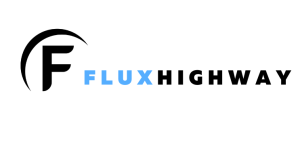Flux will be the backbone to make Web3 possible. It is growing parabolic and exponentially now. Learn more about how Flux plans to provide the bridges needed for blockchains to securely connect and the importance of interchain operability – and along the way, it is decreasing the dependence on the third party service-providers of Web2.

The need for Interoperability
The need for flexibility and adaptability has remained one of the biggest motivations behind the drive for interoperability on the Web3 Internet and blockchain networks. Until recently, interoperability was not a source of dire concern for many blockchain developers, and with good reason.
Most applications running on the blockchain are currently designed to address a unique problem, processing financial transactions, for example, and this was largely achievable using a single network. However, while interoperability was not an issue in the early days of blockchain adoption, it is now an inevitable step in driving the mass adoption of blockchain and Web3 applications. Why? Regardless of how innovative a solution is, an average user is more concerned about its flexibility of use, and flexibility can only exist due to interoperable networks.
But then, let’s take a step back to ask what exactly interoperability is?
Interoperability is the ability of two or more software components to cooperate despite differences in language, interface, and execution platform. Isolated blockchain environments limit the use cases of blockchain-based Web3 applications and restrict their practicability for everyday use.

One of the essential features of the Web3 based internet is the ability to own a digital identity while remaining in control of your data. You get to decide which information you share with which applications and how that data is used. However, this can only be realistic if there is a system that makes the transfer and sharing of data and other assets across different blockchains and networks possible. To enable multiple use-cases and give rise to a more user-friendly ecosystem, interoperability of Web3 applications across different blockchains is non-negotiable.
Inherently most layer-1 blockchains lack cross-chain interoperability features, limiting the operations of applications built on them only to their networks. To access or exchange data with other blockchains would require using third-party entities. However, using technologies such as centralized oracles as a tool for blockchain interoperability defeats the goal of the Web3 internet; decentralization, not to even consider potential security issues that may be associated with this use.
Another way to approach this problem is to integrate side chains instead. Side-chains are independent blockchain networks that are compatible and can be coupled with layer-1 blockchains to make them interoperable with other networks.
Flux combines both of these approaches in architecting interoperability on blockchain-based Web3 applications. First, its operating software FluxOS is a revolutionary second layer operating system that allows developers and builds teams to run any app regardless of its native blockchain. In addition, Flux also sustains a decentralized Oracle use case that bridges the information gap between on-chain and off-chain environments. For example, it can run apps that provide decentralized data sets across multiple applications running on different networks.

The Flux Solution
Flux’s parallel assets is a novel and groundbreaking concept. Fusion (Flux’s decentralized bridge in Zelcore), the bridge is already working much like token bridges. This process allows for fluidity and the interconversion of assets across different blockchains. FluxOS drives the final nail into the Web3 interoperability coffin by enabling the development of decentralized applications that can access, retrieve, share and exchange data across different blockchains. Flux’s development is similar to what Polkadot and Cosmos seek to achieve. Interestingly, Flux will be releasing Flux-Terra as an addition to its list of parallel assets launching in 2022, allowing users to experience the world of Terra blockchain right from the Zelcore, Flux’s official wallet.
How will Interoperability shape the Web3 landscape?
Interoperability between Web3 applications running on the blockchain will come with many advantages. First, interoperable Web3 apps running on the blockchain will give rise to new business models, solutions, and platforms beyond the limitations of the Web2 internet. Web2 simply cannot support the massive data infrastructure and the demand needed to drive these advanced applications.
The rapid growth we’ve seen in decentralized finance (Defi) is gradually spilling over to other sectors such as Real-Estate, Healthcare, goods, services. We could be looking at personalized education or employment portfolios, transparent supply chains, secure health records that can be integrated with other products and services. This will lead to creating a rich Web3 ecosystem that allows for the exchange of data between different networks and applications in a way that can be customized to match specific use-cases. Even as the world enters into a new age of IoT, interoperability between different devices and A.I-backed applications will allow for seamless integration of user information across other platforms without sacrificing security or privacy.
In addition to the industry-specific applications of blockchain tech that are currently the order of the day, interoperability opens up the door to cross-industry collaborations. Organizations and companies that were formerly considered to be operating in different spheres will now be able to go beyond these limitations by sharing and interacting with data across other fronts, effectively removing the need to repeatedly communicate the same data every time to various service providers. Advanced, fast, and efficient peer-to-peer networks will also accelerate data and asset sharing directly between end-users, kicking out the need for third parties. Value exchange will increase across different industries powered by the transparency and immutability of the blockchain. This will result in the development of personalized and tailored solutions to match consumers’ needs individually, which is one of the ideals Web3 seeks to establish.

With Web3 applications interoperable across blockchain networks, the dependence on the third party service-providers of Web2 will decrease. Also, the likelihood of centralization happening on the blockchain will be reduced. For example, instead of just one network responsible for processing millions of transactions from different applications, these responsibilities can now be shared across other blockchains, resulting in true decentralized operations. We could also be looking at faster transaction speeds and increased scalability by having a community of blockchains processing requests instead of just one.
As Web3 and blockchain technology advances, interoperability will become key to more innovative applications, improved solution deliveries, and flexibility across different use-cases. By leveraging FluxOS, users will be able to access a Web3 ecosystem that is independent, capable of retaining unique blockchain properties, and yet able to interact with other Dapps across different networks.
Although the material contained in this website was prepared based on information from public and private sources that Fluxhighway.com believes to be reliable, no representation, warranty or undertaking, stated or implied, is given as to the accuracy of the information contained herein, and Fluxhighway.com expressly disclaims any liability for the accuracy and completeness of the information contained in this website.
Via this site: https://fluxofficial.medium.com/fluxos-blockchain-interoperability-for-web3-applications-explained-4e5bc1d34955

